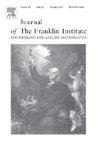用于交通流量预测的时空相似性融合图对抗卷积网络
IF 3.7
3区 计算机科学
Q2 AUTOMATION & CONTROL SYSTEMS
Journal of The Franklin Institute-engineering and Applied Mathematics
Pub Date : 2024-09-26
DOI:10.1016/j.jfranklin.2024.107299
引用次数: 0
摘要
交通流量预测是智能交通系统和智慧城市发展不可或缺的一部分。本文介绍了一种新型模型--时空相似性融合图对抗卷积网络(STSF-GACN),它利用先进的数据预处理技术提高了交通流量预测的准确性和效率。该矩阵构成了我们模型的主干,是集成生成对抗网络(GAN)架构中的生成器。时空相似性融合自适应图卷积网络是作为 GAN 生成器的一部分而开发的,它利用瓦瑟斯坦距离和动态时间扭曲等尖端技术来优化自适应邻接矩阵,使模型能够以前所未有的深度和精度捕捉潜在的时空相关性。这种将 GAN 与模型架构紧密结合的方法大大提高了预测精度和收敛速度,超越了传统的预测方法。本文章由计算机程序翻译,如有差异,请以英文原文为准。
Spatial–Temporal Similarity Fusion Graph Adversarial Convolutional Networks for traffic flow forecasting
Traffic flow forecasting is integral to the advancement of intelligent transportation systems and the development of smart cities. This paper introduces a novel model, the Spatial–Temporal Similarity Fusion Graphs Adversarial Convolutional Networks (STSF-GACN), which leverages advanced data preprocessing techniques to enhance the predictive accuracy and efficiency of traffic flow forecasting.
The innovation of our approach lies in the meticulous construction of the spatial–temporal similarity matrix through the precise calculation of temporal and spatial similarities. This matrix forms the backbone of our model, serving as the generator in the integrated Generative Adversarial Network (GAN) architecture. The Spatial–Temporal Similarity Fusion Adaptive Graph Convolutional Network, developed as part of our GAN’s generator, utilizes cutting-edge techniques such as the Wasserstein distance and Dynamic Time Warping to optimize the adaptive adjacency matrix, enabling the model to capture latent spatial–temporal correlations with unprecedented depth and precision.
The discriminator of the GAN further refines the model by evaluating the accuracy of the traffic predictions, ensuring that the generative model produces results that are not only accurate but also robust against varying traffic conditions. This cohesive integration of GAN into the model architecture allows for a significant improvement in prediction accuracy and convergence speed, moving beyond traditional forecasting methods.
求助全文
通过发布文献求助,成功后即可免费获取论文全文。
去求助
来源期刊
CiteScore
7.30
自引率
14.60%
发文量
586
审稿时长
6.9 months
期刊介绍:
The Journal of The Franklin Institute has an established reputation for publishing high-quality papers in the field of engineering and applied mathematics. Its current focus is on control systems, complex networks and dynamic systems, signal processing and communications and their applications. All submitted papers are peer-reviewed. The Journal will publish original research papers and research review papers of substance. Papers and special focus issues are judged upon possible lasting value, which has been and continues to be the strength of the Journal of The Franklin Institute.

 求助内容:
求助内容: 应助结果提醒方式:
应助结果提醒方式:


